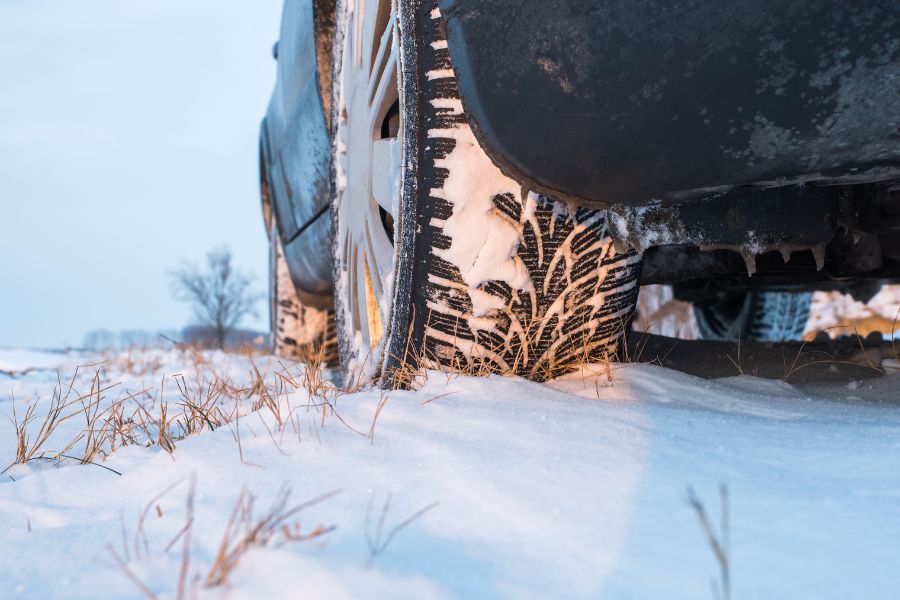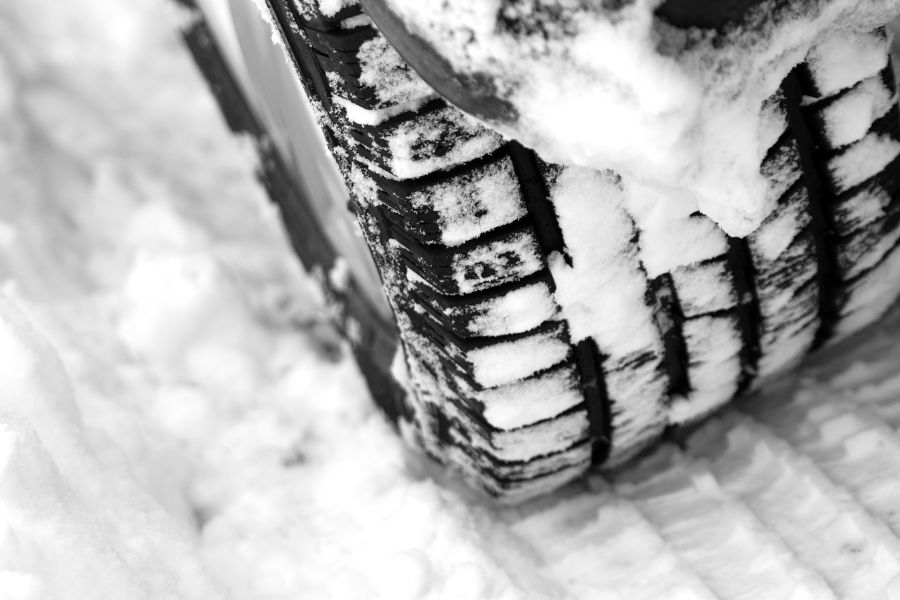Everything You Need to Know About Winter Tires Ontario Law

Everything changes as winter blankets Canada’s diverse provinces with snow and ice. In the spirit of change, you also need to install winter tires. If you plan to drive in Ontario during the winter season, it’s essential to familiarize yourself with the province’s winter tires law.
Does the Ontario government mandate winter tire installation? The short answer is NO.
However, BC and Quebec have mandatory winter tire requirements from October 1 to April 30 and December 1 to March 15, respectively.
Winter tire laws in Canada vary by province and territory, but the majority have regulations in place to promote road safety during the winter months
What’s the fuss about since it’s not a legal requirement in Ontario?
Well, we knew you’d ask!
That’s why this article will give you everything you need to understand winter tires law in Ontario. At the end of this article, your vehicle will be winter-ready.
Are Winter Tires Mandatory In Ontario?

In Ontario, winter tires are not technically mandatory by law. However, there are specific regulations in place that make them highly recommended and strongly encouraged.
Why?
Because winter tires significantly enhance your safety and control on icy and snowy roads. Thus, reducing the risk of accidents.
For more clarity, what are winter tires?
Winter tires must be designated as winter tires (with three-peaked mountain and snowflake symbols on the side wall).
Or Transport Canada must approve them with a mountain/snowflake symbol and “M+S” (for mud and snow) stamped on the side wall. Furthermore, your winter tires must meet your vehicle type’s minimum traction requirements.
This means that most all-season radial tires aren’t legally considered winter tires, even if stamped “M+S.” You’ll need to check with your tire dealer or manufacturer if you’re unsure what qualifies as a winter tire.
So when is it mandatory to have these approved winter tires in Ontario? The legal requirement is from October 1 to May 31 if any of these road conditions occur:
- Snow-covered roads
- Icy roads
- Slush-covered roads
- Unplowed streets with compacted snow
This means if you’re driving on any of these surfaces during this time frame, you must have proper winter tires fitted to the drive axle of your vehicle.
Studded Tires Recommended Time Frame For Provinces and Territories
- British Columbia (BC): Restricted areas – October 1 to April 30.
- Alberta: October 1 to April 30.
- Saskatchewan: November 1 to March 31.
- Manitoba: November 1 to March 31.
- Ontario: September 1 to May 31.
- Quebec: October 15 to May 1.
- New Brunswick: October 15 to May 1.
- Nova Scotia: October 15 to May 1.
- Prince Edward Island: October 15 to May 1.
- Newfoundland and Labrador: October 15 to May 1.
Do I Really Need Winter Tires? Safety Reasons to Consider Them

Winter tires can make a massive difference in terms of safety on the roads. With temperatures dropping and snow falling, the regular tires you use year-round would become complex and lose their grip on icy roads.
On the other hand, winter tires are designed with unique rubber compounds that maintain flexibility even in lower temperatures.
This gives them increased grip on icy roads and better traction in the snow. In other words, you’ll have more stopping power and greater control of your car or truck in hazardous, wintry driving conditions.
So if you’re considering skipping winter tires this year, remember that they’re safer than standard summer or all-season tires. They may also be required by winter tire laws depending on where you live!
Comparing All Season Tires vs. Winter Tires vs. Studded Tires
Now that you know the law, let’s talk about winter tires. Might you wonder: are winter tires required in the first place when all-season tires seem to work just fine during winter?
All-Season Tires: The Versatile Performers
All-season tires are like the Jacks-of-all-trades, designed to perform well in various weather conditions throughout the year.
With moderate tread patterns and rubber compounds, they balance dry and wet traction, comfortable rides, and longer tread life. They’re famous for regions with mild climates and occasional light snowfall.
However, they may not deliver the same level of grip and control as specialized tires in extreme winter conditions.
Winter Tires: The Cold Weather Champions
When snowflakes fall, it’s time to equip your vehicle with winter tires. These dedicated performers are designed to excel in cold temperatures, snow, and icy conditions.
For instance, you must get qualifying winter tires in southern Ontario.
Winter tires feature deeper tread patterns with unique siping (tiny slits), enhancing grip on snowy surfaces. They’re also made of special rubber compounds that remain flexible even in freezing temperatures, ensuring better traction and shorter braking distances.
Winter tires provide the confidence and control you need to navigate winter safely.
Studded Tires: The Ice-Tackling Warriors
Studded tires approach the challenge of the iciest and most treacherous winter roads. Studded tires take winter performance to another level with the addition of metal studs embedded in the tread.
These studs bite into ice and provide exceptional traction, enhancing your ability to brake, accelerate, and maneuver on slippery surfaces.
While studded tires excel on the ice, they may have limitations on dry and wet roads, and some regions have specific regulations regarding their usage due to potential road damage.
But even with 4x4s, investing in winter/snow tires is still a good idea since they’ll provide optimal traction and stability on icy roads.
Winter Tire Installation

- Gather your gear: four winter tires, a jack, a lug wrench, and a torque wrench.
- Find a safe spot and engage the parking brake.
- Loosen lug nuts but don’t remove them.
- Jack up the vehicle.
- Swap tires, and align the holes with the bolts.
- Tighten lug nuts evenly in a star pattern.
- Lower the vehicle and give a final tightening.
- Check tire pressure. Now, enjoy the snow-covered adventure ahead!
How to Choose the Best Winter Tires for Your Vehicle
When choosing the right winter tires, the most important thing is to confirm they match your vehicle’s size and load requirements. Check your vehicle’s owner’s manual to determine what size tires it needs.
You should also remember that you get what you pay for when it comes to winter tires—so buy the best ones your budget allows.
For example, investing in winter tires with a higher speed rating (based on the Uniform Tire Quality Grade) will improve performance on Ontario highways.
When selecting a set of winter tires, consider the following:
- The type of vehicles you own
- Vehicle’s load capacity
- Motorists’ style (driving habits)
- Type and level of performance desired
- Winter road conditions expected
It’s also essential that all four tires are replaced at one time so that all four wheels of your car have the same overall diameter.
And remember: don’t mix different brands and sizes because that could affect your steering and braking performance.
Tips for Using Winter Tires
We get it; winter tires can be expensive but worth it, considering the safety and legal advantages. So if you’re in Ontario, here are a few tips to consider about winter tires for vehicles:
When to Switch Them On
The law states that winter tires must be used between October 1 and April 30–but why wait? Start using your winter tires when it gets cold, and bring peace of mind.
Choosing the Right Type of Winter Tire
When choosing your winter tires, get the ones with the mountain snowflake symbol. This symbol means they’ve met Ontario’s strict standards for traction in icy conditions.
Getting tire chains if you live in a rural area or higher altitude is also a good idea—they will give you extra grip on slippery roads and driveways.
Adequate Tread Depth
While the mountain snowflake symbol is enough for traction, you should check for adequate tread depth. Check this periodically throughout the season, especially after any heavy snowfall.
Never Mix Tires
Always install four winter tires. Mixing them with other tires, such as all-season or summer tires, can compromise your vehicle’s traction and handling abilities. This can lead to accidents or loss of control.
Summary Of Winter Tires Ontario Law
So there you have it: winter tires are necessary for safety but not mandatory in Ontario law.
However, research and buy the right winter tire to fit your vehicle before the temperatures drop.
Anytime you invest in winter tires, you’re prioritizing your safety. They provide grip, stability, excellent handling in winter weather, accident prevention, improved fuel efficiency, smoother rides, and a safer driving experience.
Follow the steps above, and you’ll be on your way to a safe, comfortable winter driving experience.





